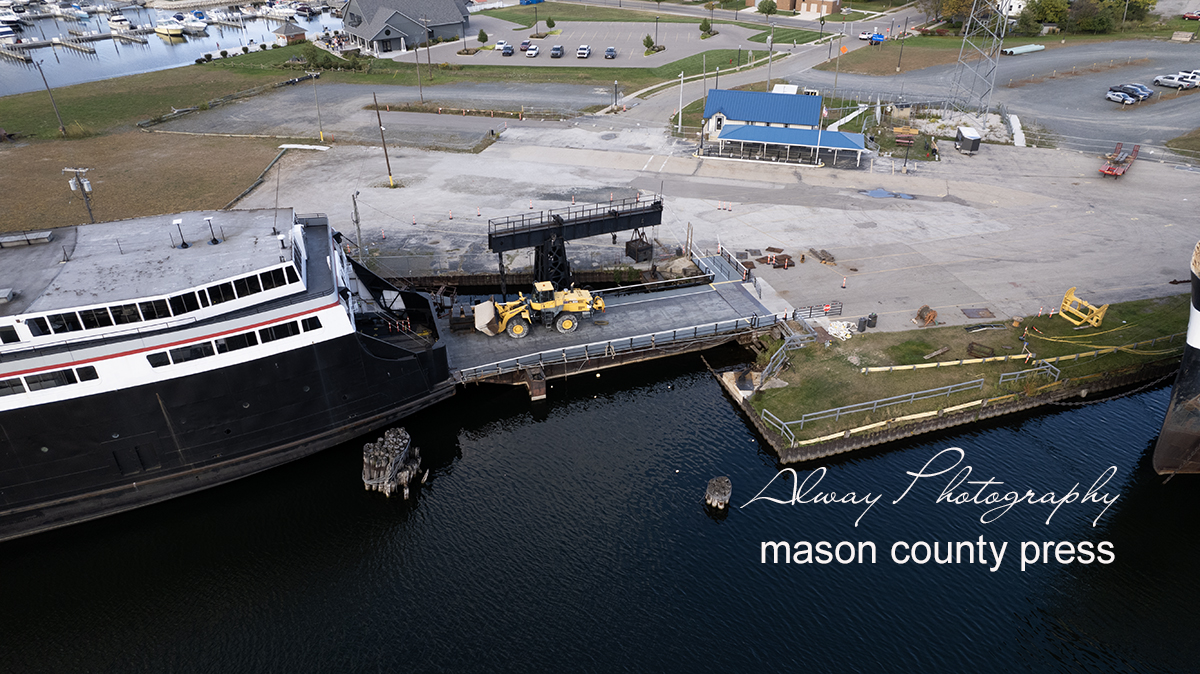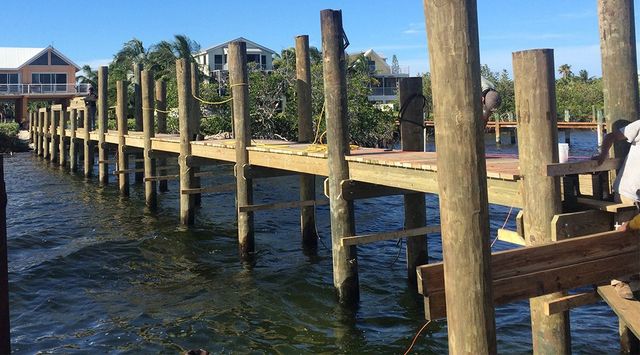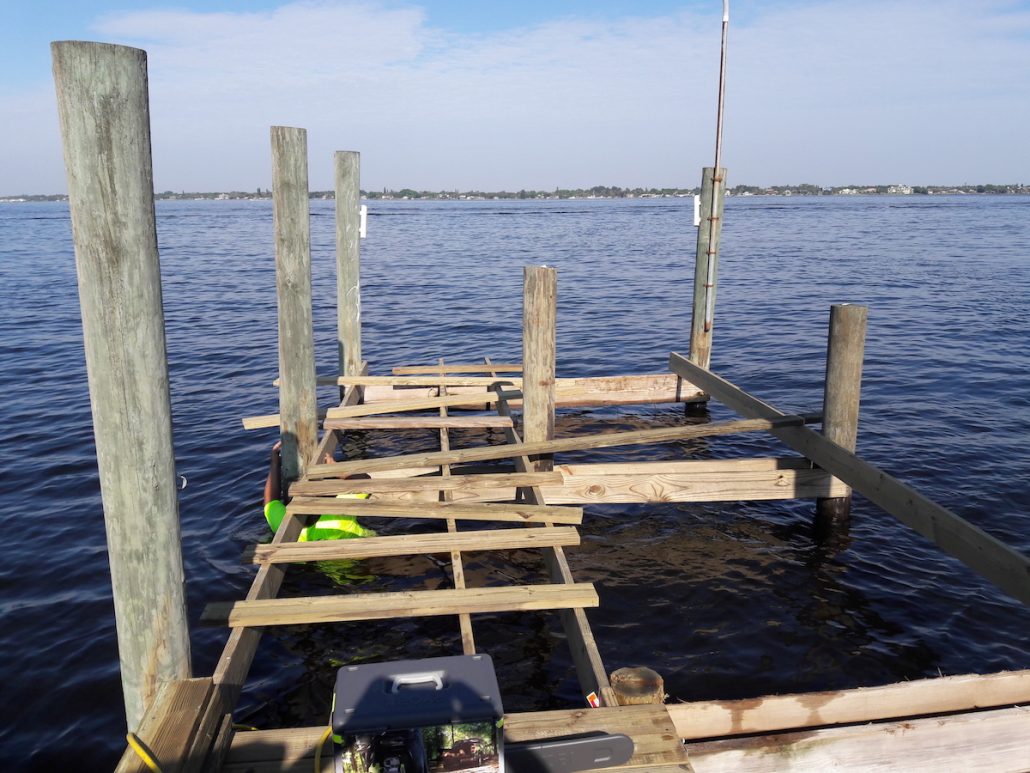Effective Dock Repair Work Techniques: Making Certain Structural Integrity
Ensuring the structural stability of docks through efficient repair service strategies is extremely important for the durability and safety of marine facilities. Subsequently, selecting the best repair materials, such as corrosion-resistant alloys and composite materials, is critical for resilience.
Examining Dock Damages
Examining dock damage is an essential initial step in guaranteeing the architectural integrity and security of any type of docking facility. This first examination entails a detailed inspection to determine both visible and concealed damages. Trick facets to analyze consist of the dock's foundation, pilings, outdoor decking, and equipment. Each element needs to be scrutinized for indications of wear, rot, deterioration, or other types of destruction that can compromise the structural stability.
Architectural engineers or certified inspectors usually carry out these assessments making use of specialized techniques and devices. Undersea assessments may utilize finder equipment or from another location operated automobiles (ROVs) to spot immersed damage. Over water, visual evaluations are enhanced by using moisture meters and various other analysis tools to reveal underlying issues not immediately visible to the naked eye.

Deciding On Repair Service Materials
Selecting the appropriate repair work materials is a critical step in the dock restoration procedure, one that directly affects the long life and performance of the fixed framework. Product selection need to be driven by variables such as ecological conditions, load-bearing requirements, and compatibility with existing dock parts.
In enhancement to wood, composite products are significantly preferred due to their durability and low upkeep requirements. Compounds, usually made from a blend of plastic and timber fibers, use excellent resistance to rot, bugs, and UV damage. For steel docks, picking corrosion-resistant alloys such as galvanized steel or marine-grade aluminum is vital to protect against rust and guarantee architectural integrity in saline water conditions.
Epoxy resins and marine-grade sealers are important for fixing fractures and securing joints, supplying a water resistant obstacle and enhancing the dock's general toughness. By carefully selecting top quality products, dock repair services can attain long-lasting results, thus protecting against future destruction and ensuring risk-free, reputable use.
Architectural Support Methods
Efficient architectural reinforcement strategies are vital in making certain the security and durability of dock repairs. One basic technique entails using steel or composite support bars (rebar) within concrete frameworks. Rebar provides added tensile stamina, avoiding cracks and dispersing tons extra uniformly. This technique is especially reliable for anchors subjected to heavy loads or extreme environmental conditions.
An additional vital method is the application of fiber-reinforced polymers (FRP) These materials supply high strength-to-weight ratios and superb resistance to deterioration, making them suitable for strengthening wood or concrete docks. FRP can be applied in sheets or strips and bonded with epoxy resins to improve architectural stability.
Supporting and securing systems also play an important role in structural support. Cross-bracing, making use of metal or wood light beams, can neutralize side pressures, minimizing guiding and motion. Anchoring systems, such as helical piers or driven heaps, give a stable foundation by content moving tons to much deeper, much more stable dirt layers.
Lastly, the assimilation of load-distribution plates can help disperse weight much more equally throughout the dock's surface area, reducing localized stress points. These techniques collectively make sure that anchors continue to be safe and robust, qualified of holding up against the roughness of their functional environment.
Advanced Repair Work Techniques

An additional advanced method involves undersea welding, which permits repair work to be conducted without the requirement to dewater the area. This technique is specifically beneficial for addressing architectural issues in immersed dock elements, making sure minimal interruption to procedures. Enhanced welding methods, combined with robotic systems, provide accuracy and integrity, consequently expanding the life expectancy of the dock.
Additionally, cathodic protection systems are implemented to protect against rust in metallic dock structures. By using sacrificial anodes or pleased current systems, these strategies efficiently mitigate the electrochemical procedures that bring about product deterioration.
Finally, progressed tracking More Bonuses innovations, such as architectural health tracking (SHM) systems, supply real-time information on the problem of dock structures. These systems make it possible for aggressive maintenance and timely interventions, eventually ensuring the long-term structural honesty of the dock.
Upkeep and Avoidance
Upkeep and prevention are basic concepts that underpin the durability and security of dock structures. Regular examinations are critical, permitting very early detection of wear and tear, potential weaknesses, and ecological effects. A proactive method, including regular checks for corrosion, rot, and structural changes, mitigates costly repairs pop over to this web-site and extends the dock's functional life.
Preventative measures should include using protective coverings to metal parts to defend against corrosion and utilizing treated wood to withstand degeneration. Furthermore, guaranteeing correct drainage and ventilation can prevent water buildup, which is a common reason of structural degradation. Incorporating quality products and sticking to maker standards throughout construction and fixing phases also play vital functions in boosting toughness.

Training workers in dock upkeep ideal techniques ensures consistent application of safety nets. Leveraging technical breakthroughs, such as drones for inspections and sensing units for real-time tracking, can additionally enhance maintenance initiatives. By prioritizing maintenance and avoidance, dock proprietors can ensure architectural honesty, operational safety and security, and cost-effective monitoring over the dock's life-span.
Verdict
Finally, keeping the architectural integrity of marine centers requires detailed dock fixing methods. Complete examinations using innovative tools reveal both noticeable and concealed problems, while the selection of proper repair work products improves toughness. Implementing architectural support techniques addresses stress factors efficiently. Advanced repair service techniques, combined with regular maintenance techniques, make sure the dock stays safe and operational under diverse ecological problems. Adopting these approaches substantially prolongs the life expectancy and functionality of aquatic facilities.
Ensuring the architectural honesty of anchors through effective repair work methods is vital for the longevity and security of marine centers.Selecting the appropriate repair products is a pivotal action in the dock repair process, one that directly influences the long life and performance of the repaired framework.Effective structural reinforcement methods are crucial in guaranteeing the stability and longevity of dock repairs. By prioritizing maintenance and avoidance, dock owners can make certain architectural integrity, operational safety, and economical administration over the dock's lifespan.
In final thought, preserving the structural integrity of aquatic centers requires comprehensive dock repair work methods.